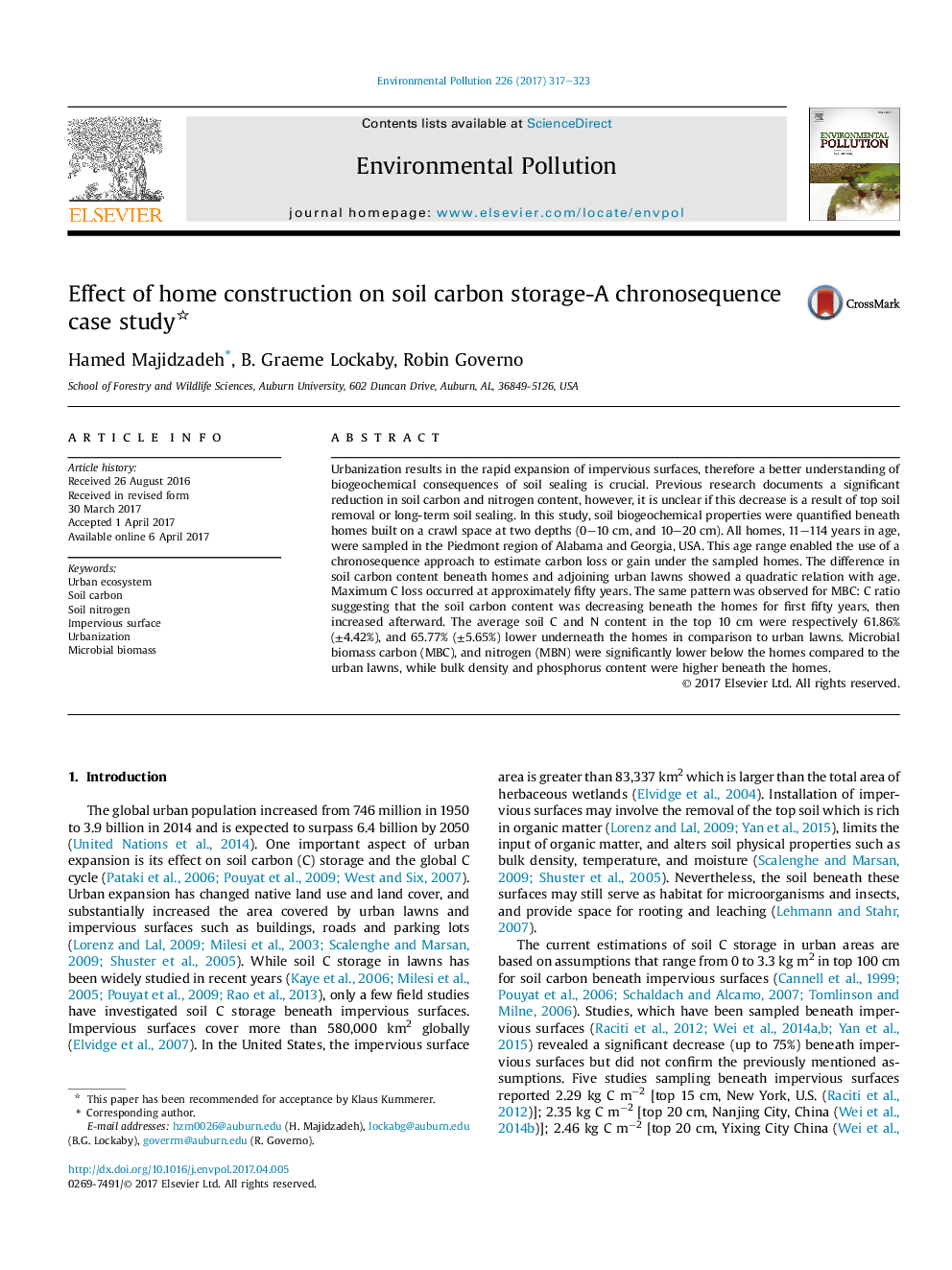| Article ID | Journal | Published Year | Pages | File Type |
|---|---|---|---|---|
| 5749094 | Environmental Pollution | 2017 | 7 Pages |
â¢The average soil carbon and nitrogen content decreased by 61.86 %, and 65.77 % underneath the homes in top 10 cm.â¢Soils beneath the homes are a source of carbon loss for approximately first fifty years.â¢After age fifty carbon sequestration becomes the dominant process underneath the homes.â¢Top soil removal and initial disturbance account for a major portion of carbon loss beneath the impervious surfaces.â¢Average microbial biomass carbon and nitrogen in top 10 cm decreased 65.14 % and 80.51 % respectively beneath the homes.
Urbanization results in the rapid expansion of impervious surfaces, therefore a better understanding of biogeochemical consequences of soil sealing is crucial. Previous research documents a significant reduction in soil carbon and nitrogen content, however, it is unclear if this decrease is a result of top soil removal or long-term soil sealing. In this study, soil biogeochemical properties were quantified beneath homes built on a crawl space at two depths (0-10 cm, and 10-20 cm). All homes, 11-114 years in age, were sampled in the Piedmont region of Alabama and Georgia, USA. This age range enabled the use of a chronosequence approach to estimate carbon loss or gain under the sampled homes. The difference in soil carbon content beneath homes and adjoining urban lawns showed a quadratic relation with age. Maximum C loss occurred at approximately fifty years. The same pattern was observed for MBC: C ratio suggesting that the soil carbon content was decreasing beneath the homes for first fifty years, then increased afterward. The average soil C and N content in the top 10 cm were respectively 61.86% (±4.42%), and 65.77% (±5.65%) lower underneath the homes in comparison to urban lawns. Microbial biomass carbon (MBC), and nitrogen (MBN) were significantly lower below the homes compared to the urban lawns, while bulk density and phosphorus content were higher beneath the homes.
Graphical abstractDownload high-res image (478KB)Download full-size image
